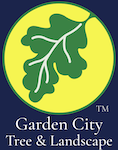If you’re just dipping your toes into the world of gardening or landscaping, you might not have considered the health of your trees yet. But just like any plant, trees are susceptible to various diseases that can hinder their growth, alter their appearance, and reduce their lifespan. Recognizing the signs of tree diseases early is crucial for effective management. This guide will equip you with the basics to start identifying and understanding common tree problems.
Signs and Symptoms of Tree Diseases
1. Leaf Changes: Observing your tree’s leaves can provide the first clues about its health. If you notice leaves turning yellow or brown when it’s not fall, or if they develop spots or unusual patterns, these are potential signs of disease. This discoloration is often one of the earliest indicators that something isn’t right with your tree.
2. Wilting Leaves: Leaves that appear limp or droopy could signal more than just a lack of water. If the soil around your tree is moist yet the leaves wilt, this could indicate a disease. It’s crucial to differentiate between underwatering and possible infections to address the issue correctly.
3. Bark Abnormalities: The condition of a tree’s bark is a window into its health. Look for symptoms like cracks, holes, or spots where the bark has peeled away, exposing decayed wood beneath. These signs can suggest that the tree is battling an infection or other health issues.
4. Unusual Growths: Keep an eye out for abnormal growths such as mushrooms or raised bumps on the bark or roots, which could indicate serious internal problems. A white, powdery substance on the leaves might be powdery mildew, a common fungal issue among trees.
5. Sap or Goo: The presence of sticky substances oozing from the tree, often referred to as “gummosis,” can be a reaction to disease infection. This symptom is especially prevalent in trees like cherries and peaches.
Steps for Checking Your Trees
● Visual Inspection: Take a thorough look at your tree from every angle. Examine the canopy down to the roots, keeping an eye out for any of the issues mentioned above.
● Touch and Tap Test: Gently poke the bark to see if it feels soft or crumbles, which could suggest decay. Tapping on the trunk and listening for hollow sounds can also indicate internal problems.
● Monitor Changes Over Time: Observing your tree across different seasons can help you notice and diagnose diseases early. Changes in appearance, growth patterns, or seasonal behaviors can provide critical clues about the tree’s health.
When to Consult a Professional
If you’re unsure about the symptoms you see or if the tree displays significant signs of disease, consulting a professional arborist is advisable. They can offer a detailed diagnosis and suggest treatments to save the tree and prevent the disease from spreading to other plants in your garden.
Basic Care Tips to Prevent Tree Diseases
● Water Wisely: Both over-watering and under-watering can stress your tree, making it more susceptible to diseases. Ensure you water appropriately based on the species and local climate conditions.
● Mulch Properly: Applying mulch helps maintain soil moisture and temperature but keep it a few inches away from the trunk to avoid moisture buildup against the bark, which could lead to diseases.
● Prune Properly: Regularly removing dead or diseased branches can prevent the spread of infections and improve air circulation around the tree, crucial for deterring fungal diseases.
Caring for trees is a worthwhile endeavour that enhances your landscape’s beauty and contributes positively to the environment. By familiarizing yourself with the signs of tree distress and disease, you can take proactive steps to ensure your trees remain a vital and healthy part of your garden. Remember, a little knowledge and effort in tree care can go a long way!

